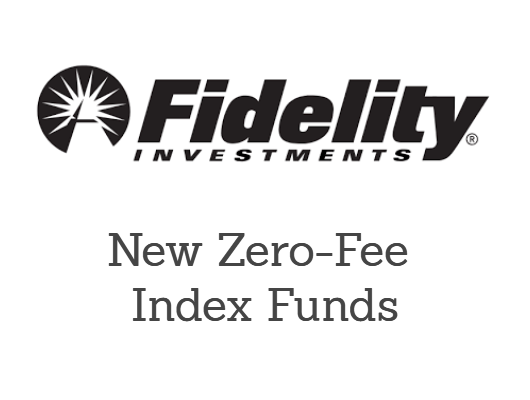You might have heard of robo-advisors. If not, here’s how they work: Basically, robo-advisors leverage computer technologies alongside the latest in investment theories. For example, you’ve probably heard that exchange-traded funds and other types of index funds leverage the fact that markets are generally up over three-year periods. What this means is that when you invest, as long as you park the money for longer than three years, you’re going to have more money than you did when you started. This is an oversimplification, but this is the basic idea.
It becomes more complicated when two factors are taken into consideration. First, diversification is required to hedge you from one sector of the market going down while others go up. For example, manufacturing might take a dive while tech stocks go up. Thus, you might want to shuffle your stocks around, or get the right balance when you buy. Second, there’s the small matter of taxes. Algorithms can both shuffle your money around to hedge, but it can also shuffle your investments around for the purpose of helping you to keep your tax burden low.
The main appeal of robo-advisors is that they have computer programs making these choices for you based on your input. That cuts out tons of money that was going to go to a financial advisor. Anyone who has ever paid one of those knows that they’re not cheap. In fact, all told, that can cost you tens or even thousands of dollars over the course of your investments. Since these expenses are no longer necessary, why keep paying them?
But when you decide that you’re going to go with a robo-advisor, there’s still the question of which one you’re going to choose. Right now, there’s a boom in the robo-advisor market. Sifting through all the available choices to find the one that’s right for you can be difficult. We’re going to make it a little easier.
How Active Are You in Your Investments?
It’s not entirely true that all robo-advisors are “set it and forget it.” Some are set up for investors who don’t want to make many decisions. Others are set up for more hands-on investors. This might mean just asking you what your risk tolerance is. Or it might be about preventing you with an option to prefer IPOs. Other robo-advisors ask you what kinds of industries you want to park your money in. And again, other robo-advisors require nothing more than being handed a pile of money and make all the decisions for you. Whatever your style of investing, there’s going to be a robo-advisor out there for you.
How Much Money Do You Have?
Some robo-advisors want a larger initial investment than others. And other robo-advisors require no more than $10 to get started in the market. If you’re a younger worker, just starting out who wants to get going in the world of investing, you might have no choice but to pick one of the robo-advisors with a smaller minimum investment. However, for older workers, those who already have a substantial nest egg, there’s no need to worry about the minimum investment threshold.
How Much Are the Fees?
This is where you’re going to have most of your savings when compared to traditional investment firms. So you’re going to want to look at what you’re paying in fees. Anything more than 1 percent is too much. But there are some robo-advisors who don’t charge anything at all. That’s not going to be the end-all, be-all in terms of who you decide to give your money to. But it can be a significant factor when deciding between two or three firms.
Do You Want Advice From a Human?
It sounds strange, but there are robo-advisors who allow you to get advice from a human while you’re at it. You can talk to advisors via phone, chat or email on some services. However, most commonly these are for older investors with lots of money and the fees tend to be higher. Still, if having a human you can talk to is going to make you feel more comfortable about your investments, there’s not really a price you can put on that.
So What Are the Best Robo-Advisors?
The “best” robo-advisor is subjective. A lot of this will depend on what you’re trying to get out of the robo-advisor. With that said, here are some of the best ones out there and what you’re going to get out of them that makes them the best:
- Personal Capital: Some of the options available through this service are free. You have access to human advisors. The minimum investment is $25,000.
- WealthFront: If you’re looking to minimize your taxes, this is one of the best options out there, so it’s particularly good for people with large investments. But there’s still a low minimum investment of $500.
- Vanguard: One of the main appeals of Vanguard is that they offer a real-life advisor in addition to a robo-advisor. So if that’s what you’re looking for, Vanguard has what you want. The advisor helps you to build the best portfolio for each and every client. However, they also require a $50,000 minimum investment, meaning they’re not the best for smaller investors.
- Betterment
: This robo-advisor begins where your goals begin. The investments are based around where you want to be, as well as where you are. There’s no minimum investment and you get up to 6 months of service free if you sign up here.
- Blooom: Blooom is a service that’s primarily designed for employer plans. It’s a flat fee per month, depending on what you’re investing and other factors. There’s no minimum investment, so anyone with an employer-based plan can get in on it.
- Wise Banyon: It doesn’t get much more free than Wise Banyon. It only costs $10 to open and none of the basic services cost money. There are, however, add-ons you can purchase for a price.
- FutureAdvisor: Recently purchased by Black Rock, FutureAdvisor offers award-winning algorithms. If your 401(k) is through Fidelity, FutureAdvisor will manage it for free. Other than that, the fee is less than 1 percent. For the premium services, you’ll need to invest at least $10,000.
- Charles Schwab: Here’s a name basically everyone knows. It’s a leading and trusted name in the world of finance. There’s no annual fee and the minimum investment is low — only $5,000.
If anything, you’re going to have trouble sorting through the number of great choices that you have out there. This is a great time for people who want to save money on their investment fees by switching from a traditional financial advisor to something more automated. If you think you’re paying too much in fees, or if you want to find an easier way to manage your investments, or reduce your tax burden, consider switching over to a robo-advisor.


